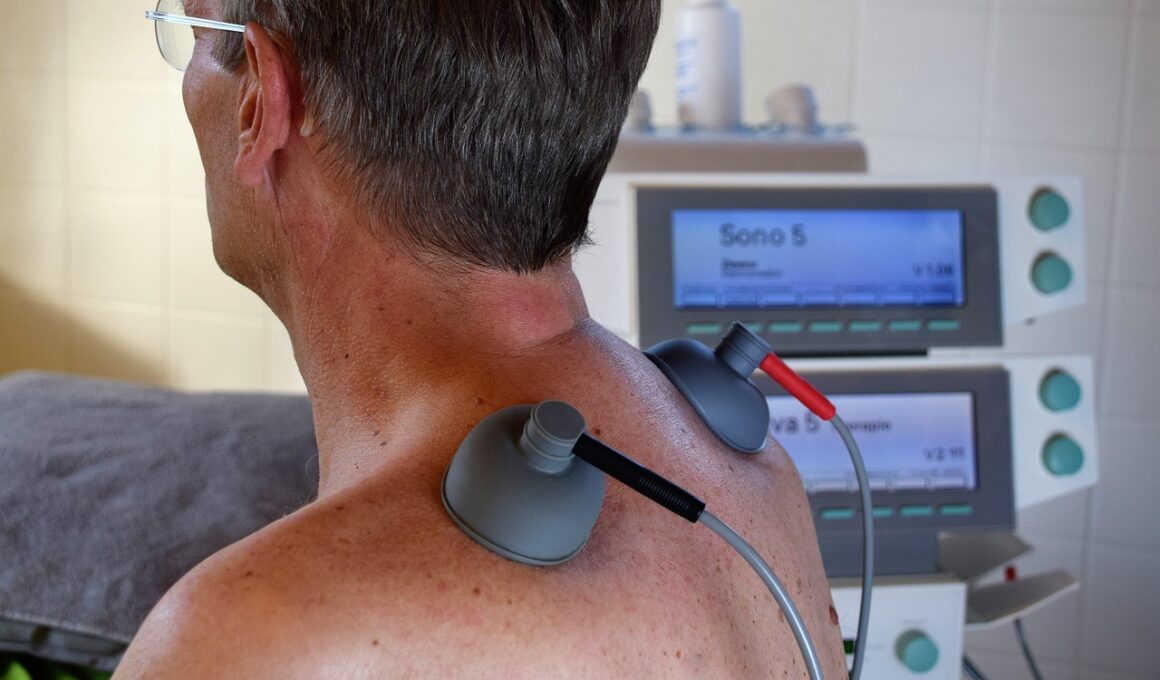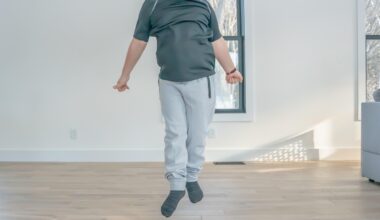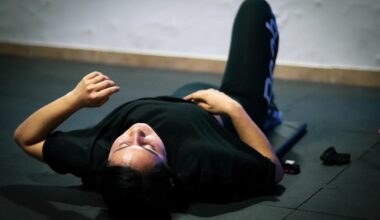Using Pilates to Support Post-Surgical Physical Therapy
Pilates is a highly effective method of exercise that not only strengthens the core but also supports recovery in various aspects of physical therapy. Patients who have undergone surgery often face challenges during rehabilitation, as the recovery process can be painful and slow. Pilates focuses on controlled movements and alignment, helping patients regain mobility without overstraining their bodies. This method encourages mindful engagement with the body, allowing individuals to reconnect with their physical selves. Furthermore, the low-impact nature of Pilates makes it suitable for post-surgery rehabilitation. Various exercises can be adapted based on individual needs, making it a personalized approach to recovery. Engaging in Pilates can enhance the overall well-being of patients, both mentally and physically. The incorporation of breathing techniques helps to increase relaxation and decrease stress. Moreover, Pilates promotes better circulation, an essential factor in healing after surgery. Thus, using Pilates in conjunction with traditional physical therapy can provide a dual approach of strengthening and healing. Many therapists now recognize the myriad benefits that Pilates can offer to patients recovering from surgery.
When designing a post-surgical Pilates program, it is essential to consider the type of surgery performed and the specific needs of the patient. A thorough assessment conducted by a qualified physical therapist will help identify which exercises are appropriate. Emphasis should be placed on gentle movements that promote range of motion while avoiding any undue strain on the surgical site. Utilizing equipment like the reformer can provide resistance while enabling customization of movements to suit each individual’s recovery stage. It is crucial to engage in guided sessions led by certified instructors who understand the limitations and objectives during this phase of rehabilitation. Monitoring progress regularly ensures that exercises remain within a safe range, allowing for gradual advancement. Providing education on posture and alignment can also facilitate healing and prevent future injuries. Many patients find that Pilates enhances their confidence as they progress through recovery. Moreover, support from instructors and fellow participants fosters a positive environment. This social aspect can motivate patients to remain committed to their rehabilitation process, ultimately enhancing the overall experience of recovery.
Benefits of Pilates for Post-Surgery Recovery
One of the major benefits of incorporating Pilates into post-surgical recovery is the emphasis on core stability. Core strength is crucial for maintaining proper body mechanics, which reduces pain and prevents re-injury. Pilates focuses on engaging these core muscles, promoting better posture and alignment, which can be affected after surgery. This is particularly important for surgeries involving the abdominal or back regions. Enhanced core strength results in improved functional movement patterns, aiding patients in returning to daily activities more swiftly and safely. Additionally, Pilates exercises encourage flexibility, which can be restricted post-surgery due to tightness and stiffness. By enhancing flexibility, patients can move more freely, contributing to a lower risk of injury. Breathing techniques taught in Pilates improve circulation and oxygenation of tissues, essential for healing. Mental focus and relaxation are also cultivated, which assists with pain management by reducing anxiety and improving the perception of pain. Overall, Pilates provides a holistic approach to recovery, addressing physical, emotional, and mental challenges faced post-surgery.
Many physiotherapists recognize the adaptability of Pilates as a crucial element for individual recovery. Within a Pilates class, patients can receive personalized attention and modifications tailored to their unique conditions. Communication between the patient and instructor is essential to ensure exercises are executed safely and effectively. By taking their specific health conditions into account, instructors can develop comprehensive programs that consider any limitations patients may have. Additionally, patients can work in a group setting that provides camaraderie and peer support, essential during challenging recovery phases. Not all Pilates exercises will be suitable for everyone; therefore, a progressive approach is paramount. Starting with simpler movements and slowly introducing more complexity allows patients to build confidence and skill while avoiding frustration. As patients progress, they may find that Pilates not only supports recovery from surgery but enhances their overall fitness. Flexibility, strength, and coordination are all improved, making it a worthwhile long-term practice. Ultimately, the integration of Pilates into rehabilitation can lead to a more successful and enjoyable recovery experience.
Creating a Safe Pilates Environment
To enhance safety during Pilates sessions post-surgery, practitioners should create an environment conducive to healing. Proper equipment and space layout are essential to minimize the risk of injury. An organized space reduces distractions and enables patients to focus on their movements. Equipments like mats, balls, and resistance bands should be appropriate for the patient’s stage of recovery and adjusted as needed. Additionally, instructors must be trained in proper techniques, as well as the rehabilitation implications of each exercise. Good communication between instructors and patients ensures that any discomfort or concerns are addressed immediately. Instructors should encourage patients to listen to their bodies, which is vital during rehabilitation. Ensuring that patients are well-informed about modifications and providing educational materials can empower them to take charge of their healing journey. One crucial aspect of this is to encourage open dialogue about how they feel during exercises. Progress assessments should be frequent, revising practices to fit evolving abilities. This collaborative approach fosters trust and respect, creating an environment where the patients feel safe and supported during their journeys to recovery.
In conclusion, using Pilates as an adjunct to post-surgical physical therapy provides numerous benefits that enhance the rehabilitation process. The holistic approach of Pilates targets not only physical recovery but also mental health. Many patients experience significant improvements in their confidence levels when participating in Pilates classes, as they engage in a community atmosphere surrounded by those in similar situations. The supportive environment encourages patients to set achievable goals through personalized instruction. As they gain strength and flexibility, patients often notice a reduction in pain levels and overall discomfort during activity. Moreover, Pilates fosters a significant improvement in coordination and balance, skills that can be compromised after surgery. Patients report feeling more in control of their movements, which allows for better engagement in daily tasks. Encouraging patients to include Pilates in their recovery journey can lead to sustained physical benefits long after achieving their initial goals. Furthermore, the adaptability of Pilates makes it a lifelong practice, extending the benefits well into the future. Therefore, both therapists and patients should consider integrating Pilates into rehabilitation protocols.
Final Thoughts on Pilates and Recovery
Incorporating Pilates into post-surgical rehabilitation can create a profound impact on recovery. Its principles emphasize the mind-body connection, facilitating a greater understanding of personal abilities. This offers patients the opportunity to rediscover their bodies after surgery, which can be a daunting experience. Engaging in regular Pilates sessions not only enhances physical strength but also builds emotional resilience. Patients who engage with their bodies in a mindful way report increased satisfaction with their rehabilitation journey. This practice also offers long-term benefits, as postoperative patients learn to maintain a healthy lifestyle. By continuing with Pilates, they can minimize the risk of future injuries while improving overall fitness. It’s crucial for healthcare providers to communicate the benefits of Pilates to patients undergoing surgical procedures. Building interdisciplinary relationships between physiotherapists, surgeons, and Pilates instructors can only enhance the recovery experience. Patients can achieve better outcomes when a cohesive approach to recovery is established. Thus, promoting Pilates as a viable option for post-surgical rehabilitation is essential for improved patient well-being and enhanced healing processes.
In summary, the integration of Pilates into post-surgical physical therapy presents an opportunity for enhanced recovery across multiple dimensions. Its benefits are numerous, providing a supportive environment where patients can thrive. Practitioners are encouraged to understand the various elements that make Pilates a valuable option for rehabilitation. Recognizing the importance of core stability, flexibility, and mental well-being allows for a comprehensive healing process. Adapting workouts based on individual needs establishes a personalized recovery plan that prioritizes safety and efficacy. Additionally, the community aspect of Pilates fosters motivation and resilience for those navigating the challenges of recovery. Overall, using Pilates can lead to improved satisfaction and confidence during rehabilitation journeys. By highlighting the importance of informed instruction and ongoing communication, patients can feel empowered throughout their recovery process. As we move forward, increasing the awareness of Pilates in post-surgical recovery is essential. This proactive approach to rehabilitation will undoubtedly yield greater success rates and happier patients. Ultimately, the marriage of Pilates with traditional physical therapy can reshape the future of rehabilitation, inspiring patients to take an active role in their healing process.


